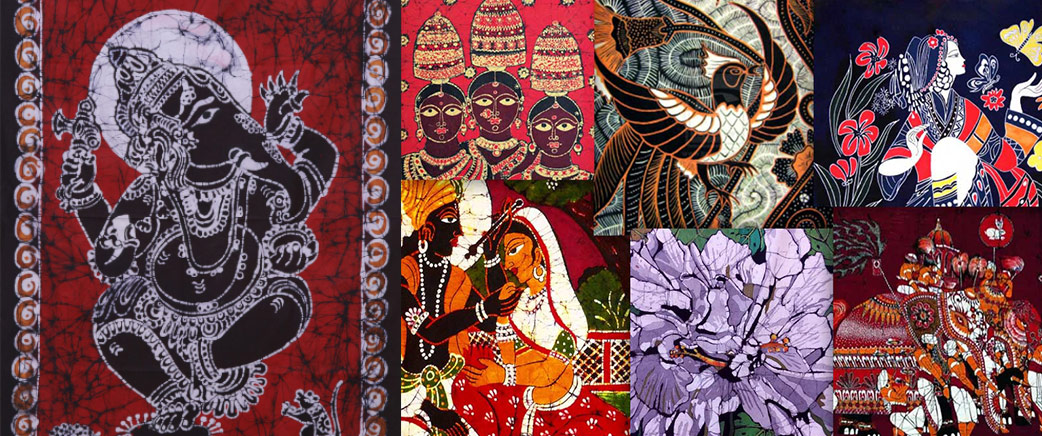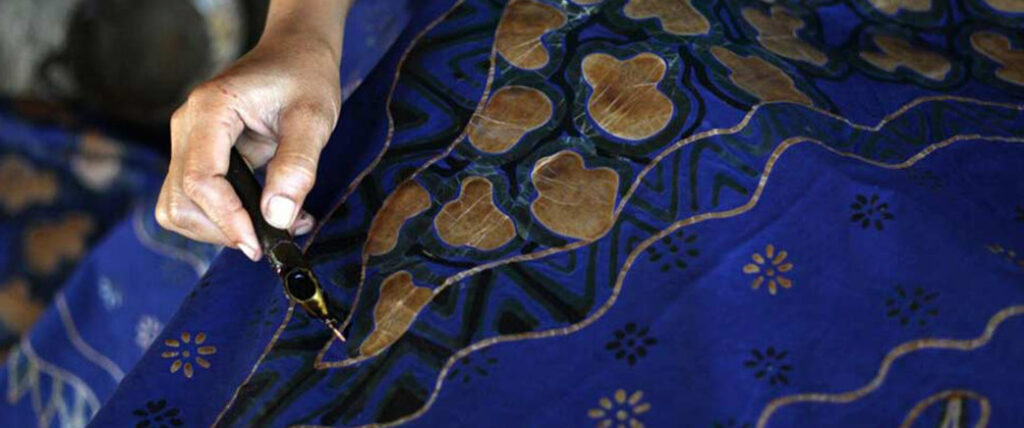
A Journey Of Wax, Dye, And Artistic Expression
Welcome to another captivating journey into the enchanting realm of Indian culture, art, and traditions. As we embark on this exploration, I am compelled to emphasize the immense richness that resides within the borders of India. A tapestry of diverse cultures interwoven with a multitude of traditions paints a vivid portrait of the country’s captivating heritage. Our previous forays into the art technique section of Cottage9 have revealed the intricate tales behind the creation of awe-inspiring arts, shedding light on the complete and traditional procedures involved. Today, our focus turns to the mesmerizing realm of Batik Paintings – an extraordinary form of artistry that exudes both uniqueness and sheer beauty. Prepare to be captivated as we unravel the splendor and allure of Batik Paintings, truly one of the crown jewels of India’s artistic heritage.
Batik Paintings
Batik paintings are a very distinctive type of artwork that involve numerous motifs and patterns painted on pieces of fabric. These paintings are thought to have been created in Indonesia, where the word used to describe them originally meant the dots on clothing. The term Batik means”wax writing”.
Batik originated in India, Indonesia, Malaysia, and Japan
Batik originated in India, Indonesia, Malaysia, and Japan
Batik originated in India, Indonesia, Malaysia, and Japan, which are also its original birthplaces. However, the Indians have been familiar with the batik art form for nearly 2,000 years.
Batik uses wax and rice starch as printing resists. This method gradually lost favor because waxing and dewaxing required a lot of time. Although it was preserved as a hobby by aristocratic women, it eventually made a comeback in the 20th century. We will study every little detail of batik artwork on this topic.
Come Along With Us On A Vibrant Trip
The Indonesian island of Java is where batik paintings are believed to have started. Batik is thought to have first been developed for the affluent Indonesian community, despite the fact that there is no concrete evidence to support this.
Some Indian states, including Gujarat, Rajasthan, and Bengal, continue to use batik today. However, the Gujarati Khatri community has a long history of manufacturing batik, and still doing it.
The Javanese culture is where the word “batik” originates. The word is a combination of the words “Amba,” which means “to write,” and “Titik,” which means “spots or dots.” It can be used to describe writing, painting, or drawing more broadly.
It has been a very long time since the ancient art of batik has been practiced. In nations like Indonesia, the Middle East, Thailand, Africa, Malaysia, India, China, the Philippines, and other locations, this is a widespread practice.
Europeans were the first to develop this expertise. They mastered the technique and began producing batik art in their own nations. Some nations have created their own variations of this art, including Japan, India, China, and Africa. When Indians recognized how important this art was, they began employing similar methods to communicate their ideas.
Some Indian states, including Gujarat, Rajasthan, and Bengal, continue to use batik today. However, the Gujarati Khatri community has a long history of manufacturing batik, and still doing it.
The Javanese culture is where the word “batik” originates. The word is a combination of the words “Amba,” which means “to write,” and “Titik,” which means “spots or dots.” It can be used to describe writing, painting, or drawing more broadly.
It has been a very long time since the ancient art of batik has been practiced. In nations like Indonesia, the Middle East, Thailand, Africa, Malaysia, India, China, the Philippines, and other locations, this is a widespread practice.
Europeans were the first to develop this expertise. They mastered the technique and began producing batik art in their own nations. Some nations have created their own variations of this art, including Japan, India, China, and Africa. When Indians recognized how important this art was, they began employing similar methods to communicate their ideas.
Let's Find Out How These Amazing Paintings Are Created
Making batik paintings is a fascinating and time-consuming procedure. Wax is continually applied to the artwork, and then the wax is eventually stripped off. Let’s examine the techniques and tools utilized in batik painting.
Tools Used
- Plain Fabric
- Wax (Bee-Wax)
- Procion Dyes
- Cantings (tjantings)
- Wooden Printing blocks
- Brushes
- Water and Whisks
- Vinegar or Bleach
Ideal Conditions
Batik painting requires ideal weather. The weather should not be very hot or very humid for making batik painting. In damp or wet conditions, the fabric may not dry properly, and the color will not come out as planned. Additionally, the heat will cause the wax to come off, which can lead to design flaws.
Process And Technique Used To Create Batik

The batik method consists of three stages: waxing, coloring, and dewaxing (removing the wax). Preparing the cloth, tracing the designs, stretching the cloth on the frame, waxing the portion of the cloth that does not need dyeing, preparing the dye, dipping the cloth in dye, boiling the cloth to remove wax, and washing the cloth in soap are all sub-processes.
The fine fractures that form in the wax, allowing small amounts of dye to leak in, are distinctive of batik. Batik wax is essential in the batik printing process. When the wax is used correctly, it produces flawless batik work. In most cases, 30% beeswax and 70% paraffin wax are used. Wax should be used during application.
The fine fractures that form in the wax, allowing small amounts of dye to leak in, are distinctive of batik. Batik wax is essential in the batik printing process. When the wax is used correctly, it produces flawless batik work. In most cases, 30% beeswax and 70% paraffin wax are used. Wax should be used during application.
Destraching And Dying The Fabric
First, the artist de-starches a white piece of the chosen fabric to remove the extra starch. This procedure is done with the help of bleach or vinegar. The fabric is dried in the sun after being de-starched.
Cotton fabric is more commonly used by artists since it is easier to work with, whereas silk fabric is more difficult to deal with due to its unique wicking capabilities. After that, the artist dyes the fabric in the desired color.
Cotton fabric is more commonly used by artists since it is easier to work with, whereas silk fabric is more difficult to deal with due to its unique wicking capabilities. After that, the artist dyes the fabric in the desired color.
Drawing The Rough Sketch
First, the artist traces or creates the rough design of the painting on the chosen cloth. Every element of the painting is skillfully transferred onto the cloth by batik masters. Paintings of Hindu Gods and Goddesses are the most popular themes in India. As seen in the Shiva – Ardhanarishvara Batik Painting.
Melting The Wax
Wax paintings are created by batik artists using beeswax. First, the wax is melted. To melt the wax, it is placed in a vessel and set on fire, causing the wax to melt and become liquid. When the wax has completely melted, the artist uses wax blocks or cantings to outline the rough sketch with wax.
Coloring The painting
The painting is then covered with the first coat of paint. Natural dyes are typically used, however, they require more time to color the artwork. Chemical colors are also used by painters today. They are quick and simple to use.
The artist applies wax to the painting’s outline. The painting is then colored by the artist using a brush. After coloring, the painting is left to dry. A second application of wax is made to the colored portions once the color has dried. The artwork is then dipped in color to shade the backdrop, allowing for full coloration of the canvas.
The artist applies wax to the painting’s outline. The painting is then colored by the artist using a brush. After coloring, the painting is left to dry. A second application of wax is made to the colored portions once the color has dried. The artwork is then dipped in color to shade the backdrop, allowing for full coloration of the canvas.
De-Waxing The Painting
The painting is ready for the last step once it has been thoroughly colored and dried. The fabric became harder after several applications of wax. The painting is submerged in boiling water in the final stage to remove the wax. It also softens the fabric. Finally, the painting is flawless and ready to leave its mark on the art world.
It takes a long time to create batik artwork. An artist must put in a lot of effort to give painting life. Paintings can take a month or longer to finish. A perfect painting requires the right weather. Otherwise, the colors would not be true in wet conditions, the wax will not perform properly in the summer and the painting won’t be as it was to be.
It takes a long time to create batik artwork. An artist must put in a lot of effort to give painting life. Paintings can take a month or longer to finish. A perfect painting requires the right weather. Otherwise, the colors would not be true in wet conditions, the wax will not perform properly in the summer and the painting won’t be as it was to be.




